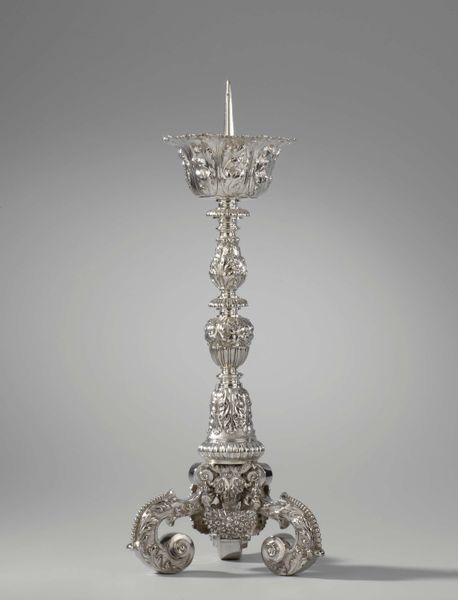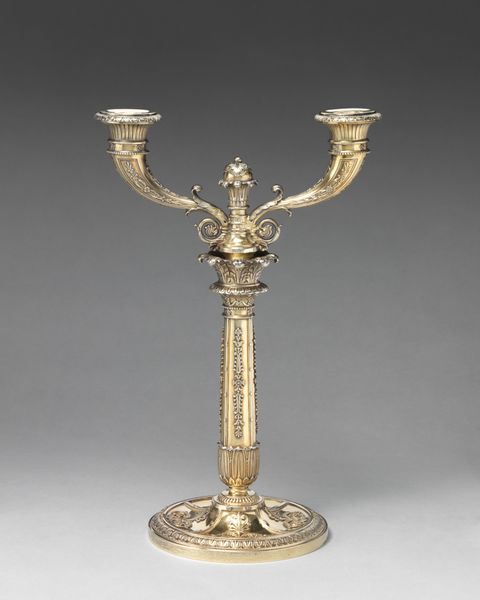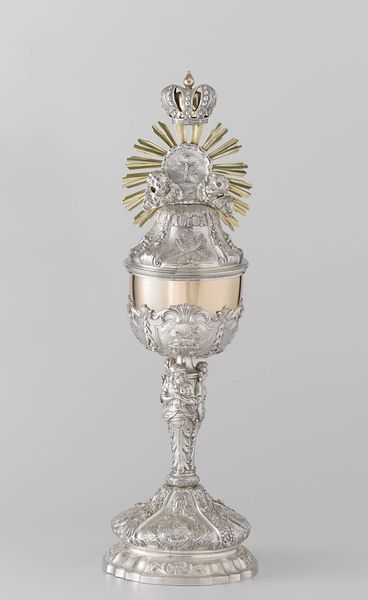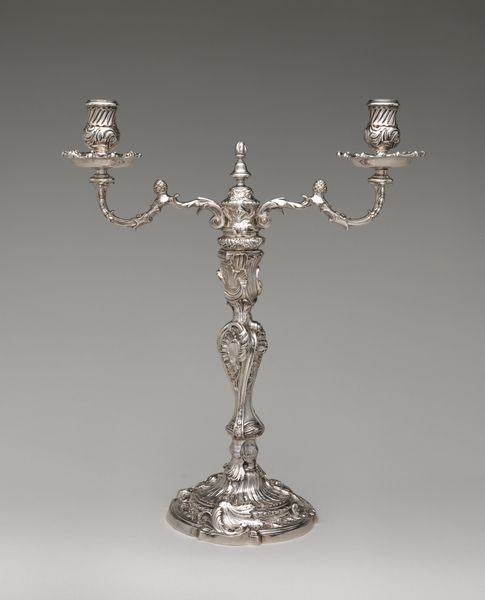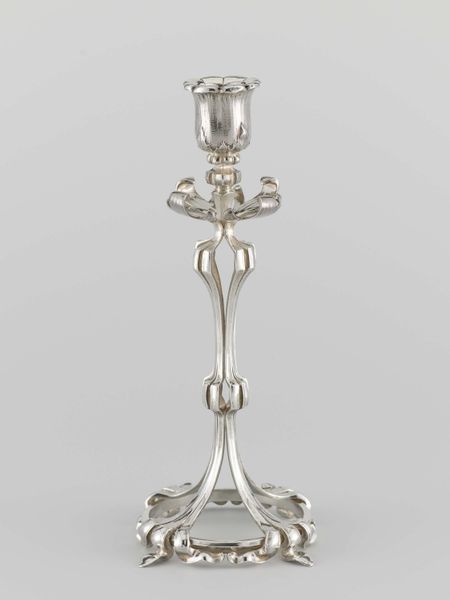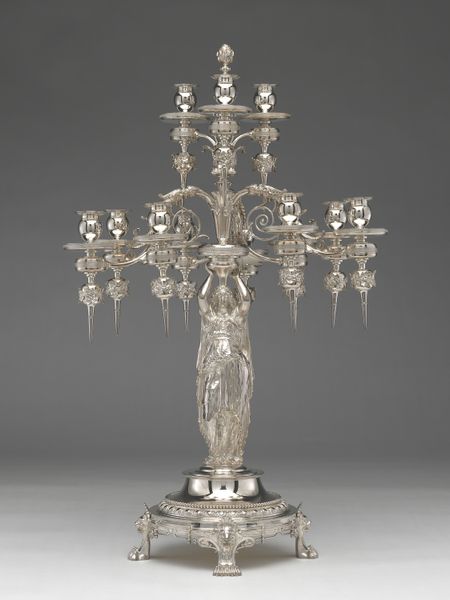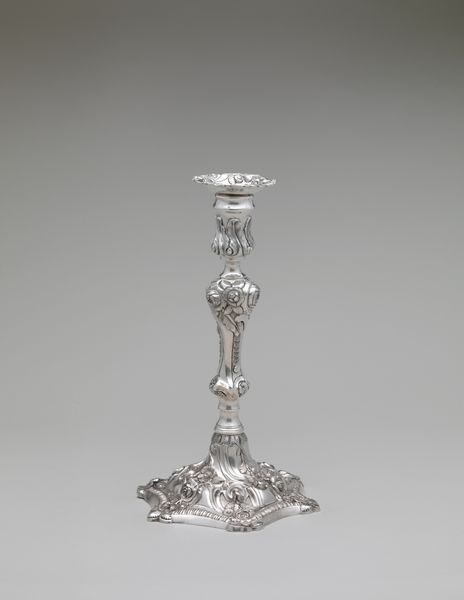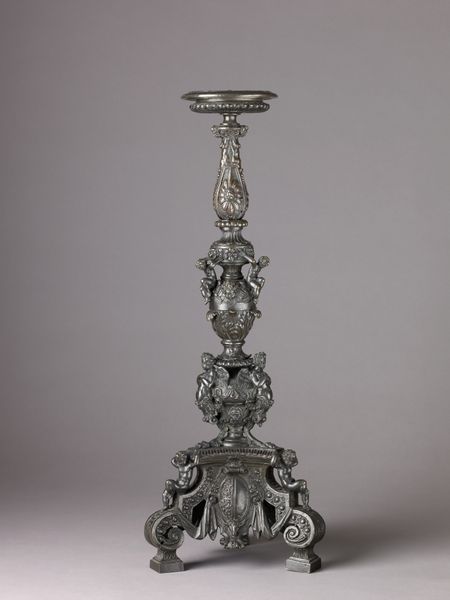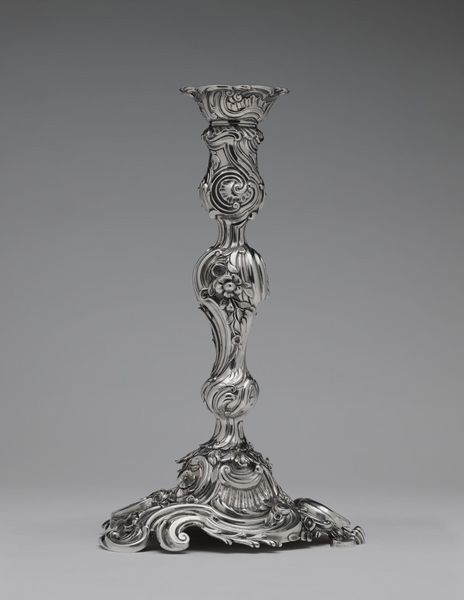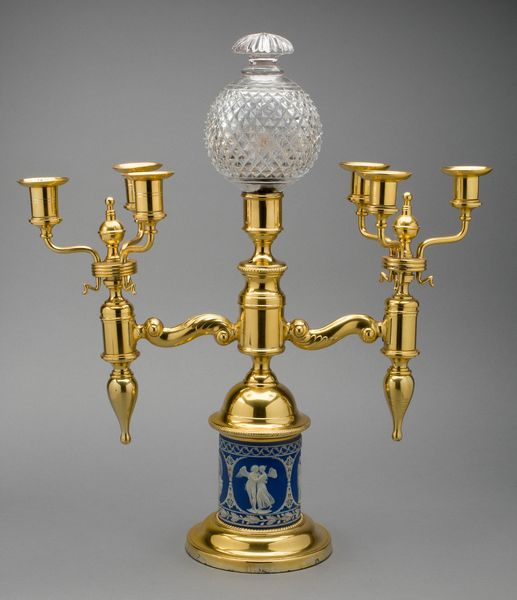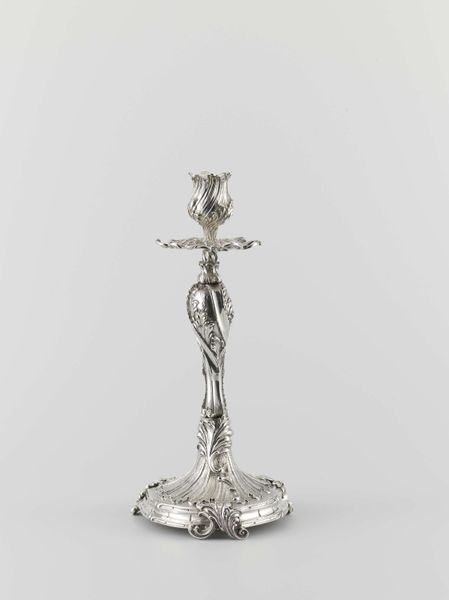
Copyright: Rijks Museum: Open Domain
Editor: Right now, we're standing in front of "Two Candelabra," created in 1842 by A.D. Pijzel, crafted in silver, a gleaming sculpture piece over at the Rijksmuseum. I’m struck by how ornate and almost playful it is, considering it's, well, a candelabra. How do you read into a piece like this? Curator: Ah, yes! Looking at it, I see more than just light holding, don't you? It's like gazing into a frozen fountain, all baroque flourishes attempting to escape the gravity of pure function. I find myself wondering: What kind of gatherings did these illuminate? What secrets did their flames witness? And wasn't it just beautiful! Editor: That's an evocative take! The "frozen fountain" idea makes perfect sense. Do you think there's any specific symbolism woven into all the decoration, beyond just pure ornamentation? Curator: Oh, undoubtedly. Consider the leaves, the curves... they're whispers of nature, tamed and formalized. This piece is talking about humanity trying to control and beautify the natural world; which, to me, sounds pretty close to many love stories or marriage relationships. Did Pijzel also see the irony in using fleeting candlelight to symbolize permanence? That, or perhaps only luxury itself would be perceived as such by these early industrialists. What do you reckon? Editor: I hadn't thought of it that way, but now that you mention it, that tension is fascinating! I was focused on just the aesthetics, I didn’t think there was more behind it! Curator: That’s the fun of art, isn’t it? There's always another layer of meaning, like peering through mist for further shapes! I am just left considering these small moments caught in reflections of grander affairs! Editor: Absolutely, it gives you something to think about. Thank you. Curator: Pleasure is all mine. It makes you realize how intertwined artistry and craftsmanship really are, doesn't it?
Comments
No comments
Be the first to comment and join the conversation on the ultimate creative platform.

